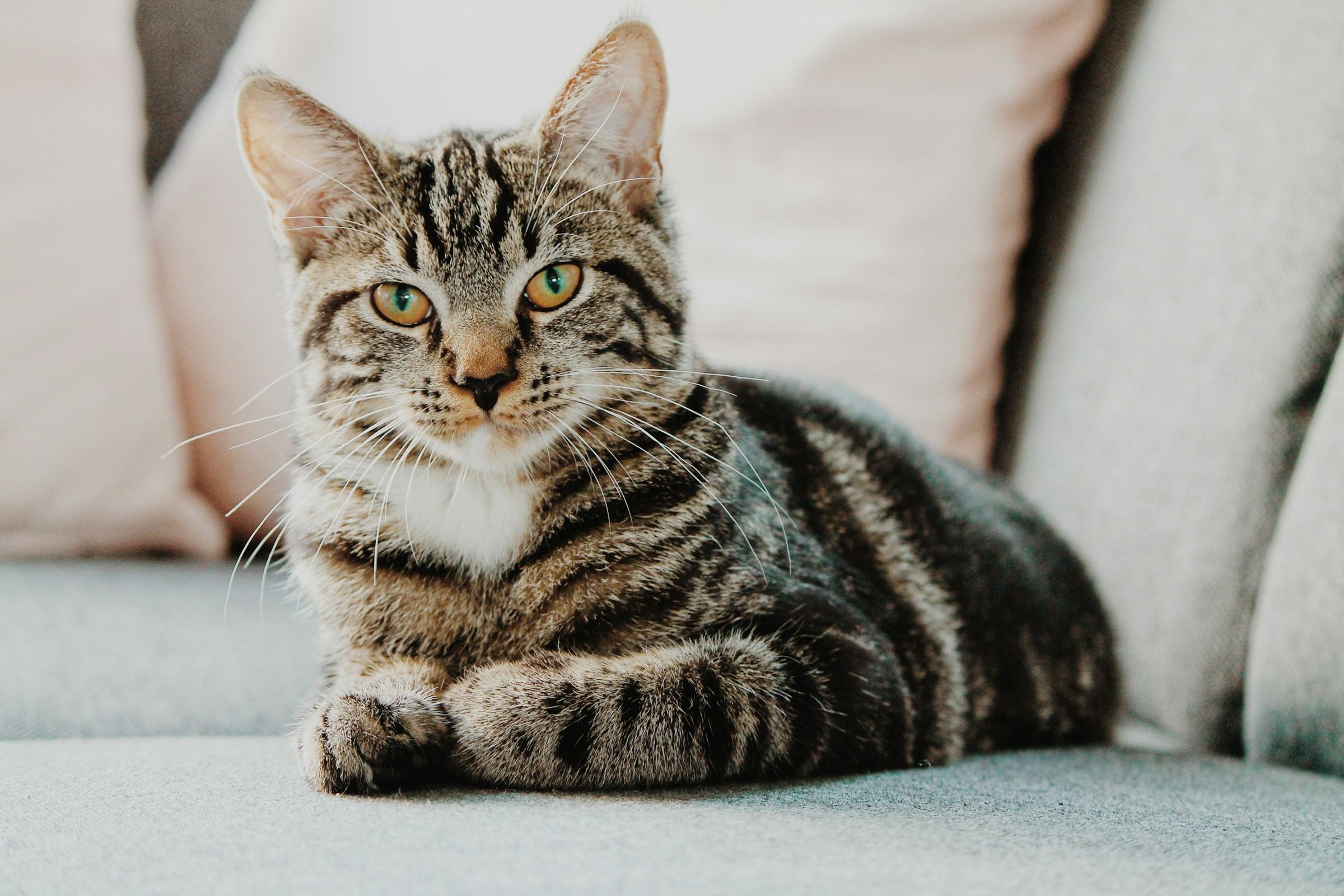Cats are notorious for claiming the prime real estate of our furniture. Instead of resorting to negative reinforcement, consider positive strategies that can foster better behavior. From enticing alternatives to playful distractions, these effective techniques encourage your feline friend to stay off the couch while ensuring their happiness. Explore creative and gentle methods that not only protect your furniture but also strengthen your bond with your kitty. Let’s make your home a cat-friendly haven without the struggle!
Understanding Cat Behavior
Understanding the feline instincts that drive your pet’s actions is crucial for effective training. Cats are naturally drawn to furniture for several reasons. These behaviors often puzzle pet owners, but they are deeply rooted in a cat’s instincts.
En parallèle : Essential Guide to Administering Subcutaneous Fluids at Home for Cats with Chronic Kidney Disease
Common Feline Behaviors
Cats exhibit various behaviors around furniture, such as scratching, climbing, and lounging. These actions are not random; they serve specific purposes like marking territory, exercising, and finding comfort.
Reasons for Furniture Attraction
Why are cats so attracted to furniture? The answer lies in their instincts. Scratching helps them sharpen their claws and mark their territory with scent glands in their paws. Climbing provides a vantage point to survey their environment, a behavior inherited from their wild ancestors.
A découvrir également : Is Your Cat Overweight? Discover How to Assess Their Weight and Create a Successful Weight Loss Journey!
- Scratching: Territorial marking, claw maintenance
- Climbing: Environmental surveillance, exercise
- Lounging: Comfort, warmth
Importance of Understanding Instincts
To train your cat effectively, it’s essential to understand these behaviors. Knowing why your cat is drawn to certain actions can help you redirect them positively. For instance, providing scratching posts and climbing trees can satisfy their needs without damaging furniture.
By appreciating these feline instincts, you can create a harmonious living environment for both you and your pet. This understanding fosters a deeper connection and makes training more effective.
Positive Reinforcement Techniques
Harnessing the power of positive reinforcement can transform your cat’s behavior.
Explanation of Positive Reinforcement
Positive reinforcement is a behavior modification technique that rewards desired actions, encouraging repetition. By associating good behavior with positive outcomes, cats learn to repeat these actions. This approach is particularly effective in training cats, as it aligns with their independent nature.
Examples of Rewards for Desired Behavior
Offering rewards is crucial in implementing positive reinforcement. Rewards can range from treats and affection to playtime. The key is to identify what your cat values most. Some cats respond well to treats, while others may prefer a favorite toy or a gentle petting session.
- Treats: Small, tasty bites that cats love
- Affection: Gentle petting or cuddling
- Playtime: Engaging with a favorite toy
How to Implement a Reward System Effectively
To effectively implement a reward system, consistency is vital. Reward your cat immediately after the desired behavior occurs to reinforce the connection. Start with small, achievable goals and gradually increase complexity as your cat becomes more adept.
Behavior modification through positive reinforcement not only enhances your cat’s learning but also strengthens the bond between you and your pet. By focusing on rewards rather than punishments, you create a positive and encouraging environment for your feline friend.
Creating Alternative Spaces
Designing spaces that cater to your cat’s instincts can enhance their comfort and well-being.
Cat-Friendly Furniture Options
Providing cat furniture is essential in creating designated areas for your feline friend. Items such as scratching posts, climbing trees, and cozy beds offer both vertical and horizontal spaces, satisfying their natural instincts. These options not only protect your furniture but also enrich your cat’s environment.
Importance of Vertical and Horizontal Spaces
Cats thrive in environments that offer a mix of vertical and horizontal spaces. Vertical spaces, like shelves or multi-level cat trees, allow them to climb and observe their surroundings. Horizontal spaces, such as soft mats or beds, provide comfort zones for resting. Ensuring a balance between these spaces caters to your cat’s diverse needs.
Tips for Making Alternative Spaces Appealing
To make these spaces appealing, use materials and designs that attract cats. Incorporate textures like sisal for scratching and soft fabrics for lounging. Position cat furniture near windows or in quiet corners to create inviting comfort zones.
- Scratching Posts: Durable, textured surfaces
- Climbing Trees: Multi-level platforms
- Cozy Beds: Soft, warm materials
By focusing on these elements, you create a harmonious environment that respects your cat’s instincts and enhances their quality of life.
Redirecting Attention
Redirecting your cat’s focus can be a game-changer in managing their behavior.
Effective Methods for Redirecting a Cat’s Focus
Redirecting a cat’s attention involves strategically shifting their focus from unwanted behaviors to more acceptable activities. This can be achieved through the use of distraction techniques. For instance, when a cat begins scratching furniture, quickly introduce a scratching post nearby to divert their interest.
Use of Toys and Interactive Play to Engage Cats
Engagement through interactive play is a powerful tool in behavior redirection. Toys that mimic prey, like feather wands or laser pointers, can captivate a cat’s attention, offering both mental stimulation and physical exercise. This not only redirects their focus but also satisfies their hunting instincts.
- Feather Wands: Mimic bird movements
- Laser Pointers: Stimulate chasing instincts
- Puzzle Toys: Encourage problem-solving
Timing and Consistency in Redirection Strategies
Consistency is crucial in maintaining effective redirection. Implementing redirection strategies at the right moment reinforces desirable behaviors. Immediate response to a cat’s actions ensures they associate the new activity with the behavior change. Regularly engage in these strategies to establish a routine that your cat can rely on.
By employing these methods, you can successfully redirect your cat’s attention, fostering a more harmonious household environment.
Utilizing Deterrents
Exploring ways to protect furniture from cat-related damage.
Overview of Humane Deterrent Options for Furniture
When seeking cat deterrents, it’s crucial to choose humane and safe options. These can include using scents that cats naturally avoid, such as citrus or lavender, or employing physical barriers like double-sided tape. Such deterrents are effective in discouraging cats from unwanted areas without causing harm.
Safe Materials and Products to Use as Deterrents
Safe deterrents are essential for furniture protection while ensuring your cat’s well-being. Consider products made from non-toxic materials. For example, aluminum foil can be laid on surfaces to deter cats, as they dislike its texture and sound. Additionally, commercial sprays with natural ingredients can be used to create boundaries.
- Citrus Sprays: Natural scent deterrent
- Aluminum Foil: Disliked texture
- Double-Sided Tape: Unpleasant feel
How to Implement Deterrents Without Negative Reinforcement
Implementing deterrents effectively requires a gentle approach. Place these items strategically on furniture to discourage scratching or climbing. Ensure that these methods do not cause stress or fear. Instead of using negative reinforcement, combine deterrents with positive alternatives, such as providing scratching posts nearby.
By focusing on safe deterrents, you can protect your furniture while maintaining a positive relationship with your cat.
Expert Insights and Case Studies
Delving into real-world experiences and expert advice.
Interviews with Animal Behaviorists
Animal behaviorists provide expert advice on managing cat behaviors effectively. Dr. Jane Smith, a renowned feline specialist, emphasizes the importance of understanding a cat’s instincts. “Cats are creatures of habit,” she states. “Providing consistent environments and using positive strategies can transform their behavior.”
Success Stories from Cat Owners
Real-life case studies highlight the power of positive strategies. One cat owner, Emily, shared her success story: “By introducing a variety of scratching posts and engaging toys, I redirected my cat’s attention from the furniture. The transformation was remarkable.” Such experiences illustrate how understanding and patience can yield positive outcomes.
Analysis of Different Approaches
Analyzing different approaches reveals varied outcomes. A comparative study of real-life examples showed that households implementing both deterrents and positive reinforcement saw a significant reduction in furniture damage.
- Approach 1: Only deterrents – Moderate success
- Approach 2: Positive strategies – High success
- Approach 3: Combination – Optimal success
These case studies and expert insights underscore the value of tailored strategies. By exploring diverse methods, cat owners can find solutions that best suit their pets and homes.
Visual Aids and Resources
Enhancing understanding through visual learning tools and additional materials.
Importance of Visual Aids in Understanding Techniques
Visual aids are crucial for grasping cat behavior and training techniques. They provide clear, step-by-step guidance, making complex strategies more accessible. For instance, instructional videos can demonstrate the nuances of positive reinforcement, showing exactly how to reward desired behaviors effectively. Visual guides help translate theory into practice, offering a tangible way to understand and implement training methods.
Recommendations for Videos Demonstrating Strategies
Videos are an excellent resource for cat owners looking to refine their training techniques. They often feature experts demonstrating behavior modification strategies in real-time. Look for videos that cover:
- Positive Reinforcement: Rewarding desired actions
- Redirection Techniques: Shifting focus to acceptable activities
- Deterrent Use: Implementing humane barriers
These visual guides provide practical insights and inspire confidence in applying new strategies at home.
List of Resources for Further Reading on Cat Behavior and Training
For those eager to delve deeper into cat behavior, numerous resources are available. Books, articles, and online forums offer valuable information. Consider exploring:
- Books: Comprehensive guides on feline instincts
- Articles: Expert insights and case studies
- Forums: Community discussions and shared experiences
These resources enrich understanding and support effective training efforts.











